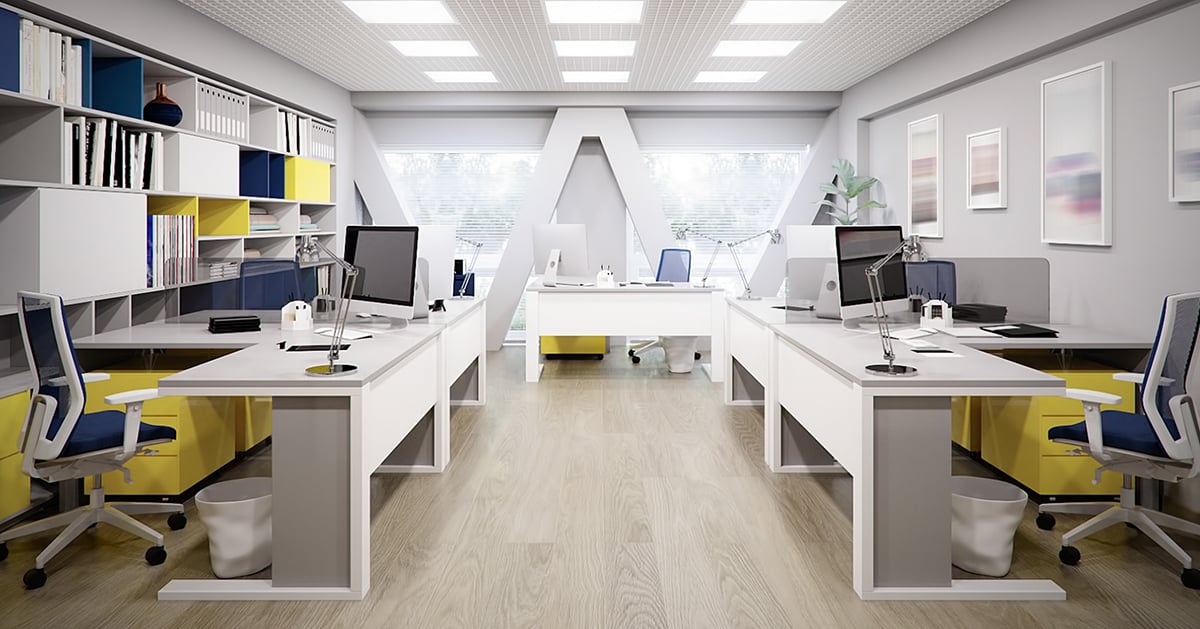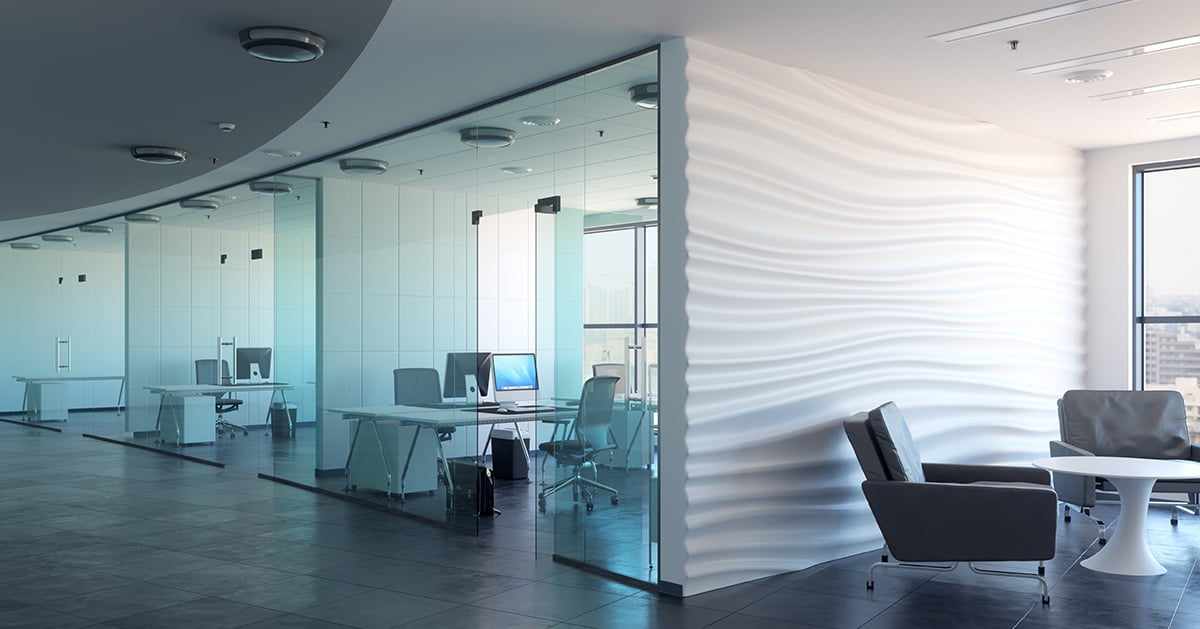
How Will We Utilize Technology to Reconfigure A Safe Office Again?
We’ve highlighted how the digital workplace will likely be forever altered in the wake of the spread of the novel coronavirus and the ensuing COVID-19 pandemic. It’s clear that this period of uncertainty has altered the way we collectively view audiovisual solutions, security and access control, emerging technologies and more.
But there’s also a very physical and institutional aspect to the “next normal” and the global return to work.
Technological solutions will be at the core of worldwide adherence to social distancing and other protective measures in gathering places, and reconfiguring these spaces to provide necessary peace of mind and safety for those who occupy them will be critical.
The Role of Video Walls and Wayfinding Solutions
Information will reign supreme in the post-pandemic “next normal.” The better informed employees, guests and more are regarding a space and how its operation has shifted, the safer the entirety of the building will become.
To that end, video wall solutions and boosted digital signage and wayfinding strategies can play a key role.
These solutions don’t need to be overly “in your face,” either, particularly over the long term. The goal of informational wayfinding and video wall strategies should be to be as unobtrusive as possible while still providing employees and guests with what they need to know.
There are a wide variety of use cases for technological solutions that can enhance adherence to social distancing measures, new access and egress requirements and plans, and more.
These include:
- A centrally located video wall dedicated to providing key updates regarding organizational policy.
- Touchless displays or lighting throughout a space to facilitate social distancing and capacity limits – think screens outside meeting rooms highlighting if they’re currently in use, etc.
- Video wall solutions in mission-critical hubs where monitoring takes place, helping allow for a more integrated approach to situational awareness, security and access control, and more

Rethinking Physical Design and Organizational Policy
While digital signage, wayfinding and video walls may be a very literal way to convey information and adhere to safety measures, spaces can also be completely rethought to encourage safer practices.
It’s helpful to view these strategies through a lens that extends beyond the short term. How can they be leveraged to promote more effective and safer practices beyond this current era of caution? Let’s break it down.
Short-term steps include:
- Controlling the sheer amount of people in a space by limiting access points, staggering entry and promoting continued remote work where possible, and working to alternate or stagger shifts where possible to avoid redundancies.
- Moving away from the modern, open-plan flooring strategies that have become increasingly popular as of late, utilizing effective collaboration tools to back up a literal re-segmentation of desks and workspaces.
- Screening employees as part of your security and access control solution, which could also mean leveraging an elevated body temperature scanning solution and taking an in-depth look at how integrated your measures are, who has control over them, and how the data they gather is acted upon.
AV technology is primed to play a role in these short-term initiatives. Wireless unified communication technologies, touchpoint reduction through effective centralization and dashboards, the aforementioned temperature scanners, and more will all have a part to play.
As we move into the later stages of the “next normal” and toward the future, consider:
- Installing permanent access and egress solutions, such as RFID scanners to automatically open doors for authorized employees.
- Rethinking the touchless office with touch-free credentialing, bring-your-own-device functionality, and more.
- Going virtual. The more often true productivity and collaboration can be accomplished over distance, the safer an organization’s employees and guests are.

Conducting Safer Meetings – Without Sacrificing Productivity
Part of the efforts outlined above is providing well-thought-out and safer meeting spaces. This can be accomplished even in spaces that weren’t originally designed for modern collaboration.
First, implementing or upgrading the physical technology that allows for collaboration should be considered.
Camera systems and integration need to account for the entirety of a physical space and its occupants, even if the entire room needs to be utilized to account for social distancing measures and other best practices.
Rooms’ audio capabilities also need to match these initiatives, with careful planning of microphone availability and location, speaker systems, and more needed to ensure that participants can hear and be heard.
Meetings are where wireless unified communications and collaborations solutions can shine, as well. With presentation options that allow for quick and simple connection to in-room displays without sacrificing device and network security, teams can be empowered to join meeting spaces and immediately begin working toward a shared goal without fiddling with unnecessary shared devices or cables or placing extensive stress on organizational IT teams.
Backing Technology with an End-to-End Game Plan
The technological solutions we’ve covered are certainly set up to make a huge impact on the way business is conducted moving forward, but they’re only half of the picture.
It’s critical to engage in thorough technology planning that can not only help retrofit existing spaces to bring them up to speed with modern collaboration tools, safety measures and more, but also assist in engineering entirely new spaces aimed specifically at accomplishing those goals.
Electrosonic can help provide that clear game plan with our Technology Master Planning methodology, which helps align all the stakeholders on a given project with a similar vision and walks you through every phase of the project lifecycle to ensure you’re getting a solution that’s perfectly suited to your needs. To learn how we’re committed to helping you create safer spaces where we all live, work and play, contact us today.
Victoria Cosgrave
Victoria Cosgrave, Field Marketing Manager, Enterprise at Electrosonic, has wide-ranging experience of technology within professional services, financial services, infrastructure, transport, pharmaceuticals and government. Her knowledge and experience enables her to write about the technological landscape and the issues facing clients with great insight.










.jpg?width=1500&height=995&name=ELC501_N17_medium%20(1).jpg)



.jpg)

.jpg)



















.jpg)




.jpg)
-png.png)












.jpg)





.jpg)


-(1)_1200x629px.jpg)




.jpg)
.jpg)





-RR.jpg)







.png)




.jpg)






.png)




















%20(1)-es.jpg)
.jpg)








.jpg)

.jpg)





.jpg)



.jpg)















.png)

.png)





























.jpg)
.png)





.png)

.jpg)


.png)






.jpg)
.jpg)


